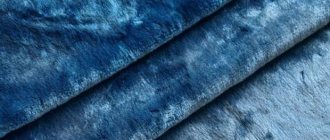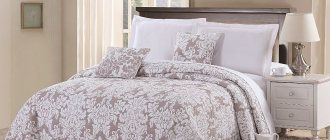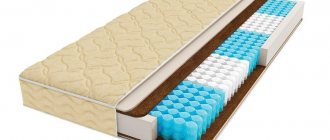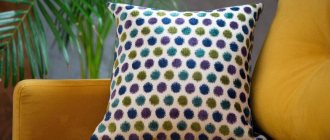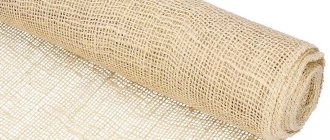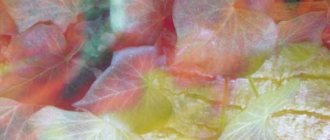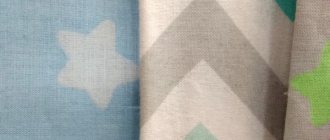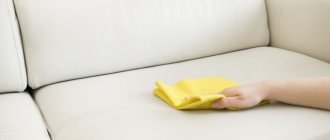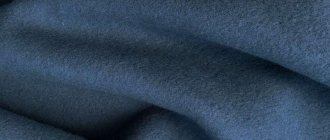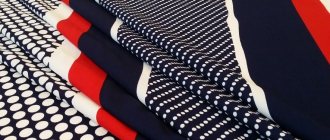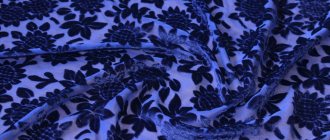Perhaps it is not an exaggeration to say that plush is a fabric with which every person is somehow familiar. Very pleasant to the touch, reminiscent of fur, it is often used to make soft toys, various interesting crafts, and fashionable clothes. Plush materials are pile materials, characterized by characteristic hairs on the surface. Thanks to their beautiful and very cozy texture, they are in demand in the modern textile and clothing industry.
What kind of fabric
The famous “plush skirt”, which was sung about in a simple pop song of the 80s of the last century about Ksyusha, oddly enough, is still fashionable and relevant today. True, the manufacturing technology has changed a little, but the pleasant-to-touch material has not been forgotten. To understand what kind of fabric this is and why we like it so much, let’s look into history.
A little historical background
So, outwardly, plush fabric resembles fur, and, in fact, it is, but only artificial. The material appeared in Russia a very long time ago: approximately in the middle of the 17th century, but it gained the greatest popularity in the 70s of the 19th century. He was also in demand in the USSR. The material was used to make cozy jackets, as well as original women's short fur coats, which had the cute name “buns”.
Unique textiles were used to cover furniture and decorate simple interiors. One of the characteristic positive features of the material is that the pile practically does not fall out or spill out. It can only wear out over time. This is why plush fabrics are so in demand in everyday life.
And yet, so that you can accurately imagine what fluffy canvases look like, we offer a detailed description.
Description
The fabric has a pleasant fleecy surface. The hairs are long, about a centimeter, sometimes even longer. The texture is very delicate, pleasant to the touch, reminiscent of natural fur. In English, plush is written as plush, and translated as “chic” or “luxurious.” Indeed, this textile looks very beautiful.
Modern industry produces many varieties of the described canvases. They differ in pile length, composition, design and manufacturing technology. One of the most common types is called plush velor, but there are many others, which we will discuss in more detail below.
Why plush and cotton?
Plush Minky
- This is microfiber plush with a low and sparse pile.
Its “trick” is its cute, soft and delicate little bumps that children really like. The fabric is very soft and delicate, pleasant to the body, incredibly warm. To understand the peculiarity of this material, think of a teddy bear. Contains 100% polyester. There is a misconception about the dubious quality of the fabric, but in fact, polyester is absolutely safe, since it is produced using modern technologies and modern equipment. You can find out more about the Minky plush.
You can buy a Minky plush inexpensively.
Cotton
– it is also called “children’s”. This is a natural, hypoallergenic fabric that does not cause allergies or skin irritation, and is absolutely safe for the health of the child. Modern manufacturers offer a huge selection of flowers and prints. The most modern colors in the Polish cotton collection. This material is affordable. The fabric perfectly allows air to pass through and does not create a greenhouse effect; the skin breathes in summer and retains heat in winter. Cotton has the ability to absorb 30% of moisture from the total weight, and at the same time remain absolutely dry. This is a very important factor for children's skin, since the sweating function of a little person is formed before the age of 5. And increased body humidity is possible.
You can order Polish cotton at low prices. We guarantee quality and fast delivery.
You will also need:
- Scissors;
- Pencil or soap;
- Threads;
- Meter tape;
- Sewing machine.
We decide on the size. Recommended: 100/100 cm (you will get a square blanket); 100/110 cm; 100/120 cm (rectangular shape). You can make a square blanket, or with rounded corners. A toe will help round the corners. The square shape can be immediately measured and cut out on the fabric. For a shape with round corners, it is better to make a pattern on paper. Then pin it to the cotton and cut it out. Do the same with plush and padding polyester (if the blanket is winter).
- Lay the plush on a flat surface, such as a table. Measure a square or rectangle of the desired size and cut along the contour. Repeat the same with cotton.
- Cut it the same size. We remind you once again that it is better to wash and dry it first, and only then start cutting. After this, you can safely wash the product and not worry that it will shrink. In some cases, shrinkage can be 4 cm per meter.
- You need to place the cotton and Minky plush right sides together. Remember that plush stretches. Therefore, we recommend pinning it around the entire perimeter so that nothing moves.
- We sew along the contour with a regular seam, departing 0.5-1 cm from the edge.
- Leave somewhere around the edge of 10-15 cm so that through this hole you can turn the blanket right side out. In this case, the seams will be on the inside.
- When you are finished with the edges, carefully turn the blanket out.
- Next you need to stitch the hole.
- This can be done with a hidden seam by hand or on a machine.
- You can add a border along the edges to create a flat border.
you can buy Minky cotton and plush at the best prices. Modern colors of the latest collections. Excellent quality. Fast delivery throughout Ukraine.
You should have a beautiful summer blanket for your child. If you need a blanket for colder times, use padding polyester. The sewing principle will be slightly different from the previous one.
- Cut out 3 identical pieces of fabric, and the same from padding polyester.
- Then lay out the padding polyester on a flat surface.
- Cover it with plush on top - the side with the pimples facing up.
- Then place the cotton face down on it.
- Secure everything around the edges with pins.
- Step back 1 cm from the edge and sew with a machine.
- Leave a 20 cm hole in the corner of the blanket so that you can turn the blanket inside out. To make it look nicer when turned inside out, we recommend making small cuts at the corners and then turning it inside out.
- Then secure the hole through which you turned it inside out with pins and sew it together by hand.
- Step back 4 cm from the edge of the blanket and sew with a machine.
- Don't forget that there is padding inside. When washed, it can pill and form unsightly lumps, while reducing its ability to warm. Therefore, we recommend stitching the blanket several times along the outside.
Image source: https://tehnolog.mirtesen.ru
We hope our instructions were useful for you, and the sewing process is not too complicated.
Compound
Initially, plush fabrics were made mainly from cotton raw materials, but today the compositions can be varied. For example, cotton is often combined with viscose, silk, and synthetics (polyester). Sometimes wool and other types of textile raw materials may be used.
Much more interesting is the method of producing artificial fur. There are several known technologies thanks to which the pile is obtained:
- looped, or continuous - elongated loops are formed on the surface;
- split, reminiscent of familiar fur hairs;
- one-sided, or facial;
- double-sided, located both outside and inside.
Plush fabrics with cut pile look very similar to velvet. As a rule, cotton raw materials are used as the basis, and viscose or wool fibers are used for the weft.
Looped models resemble familiar terry towels. They are created on special knitting machines, so it is more logical to talk about knitted fabrics than about classic fabrics.
Section of pile weave fabric: a) – weft weave; b) – warp weave, two-sheet method; c) – warp weave, rod method
Single-sided materials are more popular than double-sided ones, but today you can buy both.
Manufacturing process
The manufacturing technology is similar to the production of velvet fabric. The only difference between them is the length of the pile. When making loop plush, two threads are thrown onto the needles. The loops on the wrong side are made elongated, and on the front side - short. Long threads are laid as close to the needle hook as possible. Warp fibers are called ground fibers, while others are called plush fibers.
To obtain a smooth fabric, you need to curl one thread into a long loop, and the other into a short loop. To achieve a patterned surface, you need to act differently. Short loops are constantly created from one thread. Long loops are made only on special needles, which are selected in accordance with the declared pattern.
For the production of the split version, double-font machines are used. They have one cylinder equipped with reed needles, while the other device is equipped with hooks or tocols. The latter is called a rip washer. Such machines have several systems that ensure the formation of pile. When the needle works, two threads are obtained at once.
They pass into each system simultaneously, but are laid at different angles. The ground thread is captured only by the cylinder needles, the plush thread - by needles and hooks. The “cylindrical” thread forms the ground, the plush thread forms the loops. The latter are cut with special circular knives.
Thus, depending on the type of plush, different types of devices are used:
- The knit is made from cotton yarn or viscose threads with a loop length of 3-4 mm on a single-loop machine;
- Patterned kulir and loop plush - on a Rachel machine;
- To produce fabric with the highest possible pile (up to 16 mm), Raschel machines and double-font round machines are used.
Initially, natural silk was used for production. It is still used today, but the finished product also has a corresponding cost. Therefore, to reduce the price, the base is created using cotton, viscose silk, staple or wool yarn.
This is interesting
What kind of fabric is your favorite among materials for decorating children's products? This is a microfiber fleecy Minky plush with pimples. It attracts with its rich and rich colors with various prints, tenderness and pleasant tactile sensations.
Types and their properties
As mentioned above, plush fabrics can be divided according to the composition and types of fibers, pile length, additional design, etc. In this case, the properties practically do not change. We have already talked about the different compositions above, but we haven’t talked about the texture. So, plush fabrics are:
- smooth - classic options with an even, long pile, identical over the entire surface of the canvas, are considered a type of furniture, as they are often used for upholstery;
- patterned - have a beautiful, embossed surface, which is created by alternating hairs of different lengths, look magical and are used in interior textiles, as well as in the production of fashionable clothes;
- embossed - the pile is laid in different directions, forming interesting patterns, the scope of application is the same as that of the previous group, sometimes such fabrics are called felted;
- shaped - similar to patterned, but differs in more complex, interesting patterns, sometimes obtained by cutting or pressing the pile.
Color solutions are not limited: both classic white plush and fabrics in familiar natural shades are produced. Original solutions are especially popular: pink material with a vintage effect, green, yellow, crimson, blue, cyan, purple and many others. The basis is bleached artificial plush, which is then painted in any shade. You can carry out a similar process at home.
Soft fur toys
Fur is an excellent material for sewing yourself, because compared to other fabrics it has one important advantage - it is very easy to hide seams among the long hairs of fur. And even if they turned out imperfect, no one will notice. In addition, it is also not necessary to work out very small details on the pattern; very small “protrusions” will still be lost in this material. At the same time, the larger the finished product, the easier it is to work with patterns, since sewing small parts will require some pains, especially at the beginning of work.
Many needlewomen refuse fur because it tends to fray, leaving small hairs everywhere, causing irritation in the eyes of some. In addition, some skill in cutting will be required.
Instead of scissors, it is recommended to use a special tailor's knife or a sharp stationery knife. Cutting movements should be short, avoiding deep penetration of the tool into the fur, so as not to damage it.
This material also requires special care, since most types of fur will need to be washed very carefully, or not at all.
Flaws
Of course, there are also small disadvantages that you need to be aware of. Firstly, the canvases are quite dense and heavy. Their specific gravity cannot be called small. Many people note that plush sheepskin coats put pressure on their shoulders, creating some discomfort when wearing them.
Secondly, these textiles are not easy to process. Despite the fact that the pile itself does not crumble, the base fibers often spread out, so only professionals who are well acquainted with the technology can sew from plush.
Thirdly, matter collects dust; it is not for nothing that such toys are popularly called “dust collectors”. It gets dirty easily, which is not very good from the point of view of practicality and hygiene, especially for children's rooms.
How to sew fabric toys
It’s easy to sew textile toys with your own hands, both with and without patterns. Of the most affordable fabrics for sewing soft toys with your own hands, you can use the most familiar to us: cotton or knitwear. It is with them that you can start practicing sewing, since scraps or pieces of this material are found in almost every home. Using a sewing machine is much more convenient than doing it by hand, since making small, neat, invisible stitches is quite difficult. These fabrics are easy to wash, which is a good reason to choose them, considering that children have a habit of getting everything dirty.
At the same time, the knitwear is elastic, which helps to easily shape the shape of the future toy. A large number of colors gives greater freedom of creativity. Among the disadvantages, one can highlight its rather high price. Most often it is used for making dolls and educational toys.
Cotton is no less popular for its availability, low price, and variety of colors. However, it does not hold its shape well and does not stretch.
Before starting the process, it is recommended to wash and iron the selected fabric. This will make cutting and sewing more convenient, and the product will ultimately turn out smooth and neat.
Master class on sewing an owl from old jeans:
Several videos on how to make different fabric toys with your own hands:
Application area
Despite the shortcomings, the material is in demand in modern life. A plush blanket will give you special comfort and a feeling of security. It is soft and very warm. The same can be said about a plush blanket, under which it is so pleasant to warm up on winter evenings.
Fluffy fabrics are used to make pillowcases, bedspreads, and other textile products, including even napkins. Plush beautifully covers children's sofas and lies in soft folds on armchairs. Comfortable, soft envelopes are sewn from it for babies.
Plush is actively used for toys. As children, many of us had cute bears, bunnies, squirrels, and foxes with a nice artificial fur coat. As a rule, plush for toys is traditionally natural, natural colors. However, modern fashion is changing ideas. Today there are bright, fantasy, unusual animals - toys made of multi-colored plush.
But not only ready-made canvases are found in modern stores. Now the so-called plush yarn has become incredibly popular - thick, very soft and delicate to the touch. It is used for various purposes - for knitting clothes, bedspreads, and other unusual things. The peculiarity of designer products made from plush yarn is their volume and cute, cozy appearance. This is most noticeable in interior or children's toys. They simply captivate at first sight. This is probably where the undying popularity of plush products lies.
Cloth
Plush clothing also does not lose popularity, despite the huge selection of other textile materials. Different types of fabrics are used to sew such products: knitted plush, textured, regular, trendy minky in white colors and others. Moreover, things are made for both adults and children, including newborns.
These can be fashionable women's or children's home suits (there are also models for men), jackets, snoods, plush dresses and much more. The material is often used for lining. Today, comfortable, cozy and incredibly soft plush suits have risen to the peak of popularity, not only for kids, but also for adults.
Scope of application: what is sewn from artificial material, what is it used for
Unlike the foam material, it is considered an expensive fabric, so it is less in demand. But the demand for products made from it still remains high. Plush is made from:
- tablecloths for festive purposes, curtains (they are often used in theaters), curtains;
- furniture upholstery;
- outerwear, hats, accessories of various kinds;
- blankets, warm blankets, additional items for clothing and shoes.
They also make clothes for both men and women. A special place in the clothing industry is occupied by the production of clothing for children. Many toys are made from the same fabric - the teddy bear alone is worth it.
Care
This is not to say that plush fabrics are undemanding to care for. On the contrary, if you want them to remain beautiful longer, you will have to follow some rules. Be sure to read the accompanying label carefully. This will help avoid possible troubles.
Plush should not be washed, especially in a washing machine. The most reasonable and correct decision is to use dry cleaning services. However, while washing is still permissible for some types of products, it is strictly prohibited for bunnies and bears. Once the toys are in the washing machine, their cute appearance will disappear. The “fur” will become tangled and the shape will be lost. Therefore, to the question whether it is possible to wash them, the answer is clear: it’s not worth it. Only dry brushing or dry cleaning will help here.
But plush can be easily painted at home. Special textile dyes or simple potassium permanganate are suitable for this. But again, we are talking only about canvases; it is better not to experiment with finished products. Numerous painting methods are described in detail on the Internet.
Plush fabrics will never lose their relevance due to their beautiful, spectacular appearance. They are loved by craftswomen and widely used in modern industry.
Dear readers of the Tkan.Club website, if you still have questions on this topic, we will be happy to answer them. Leave your reviews, comments, share stories if you have dealt with this material! Your life experience may be useful to other readers.
Is it possible to embroider on plush fabrics?
One of the popular decorations is embroidery. It can be machine or manual. Hand embroidery on plush does not have to form a complex composition. Since it will be quite difficult to do this on fabric with pile. For convenience, you can draw a drawing on thin paper, such as tracing paper, and attach it to a certain area of the canvas. Next, using a hoop, embroider the future design along the contour on paper. After completing the work, carefully remove the paper from under the embroidery.
Things are much simpler with embroidery done using an embroidery machine. It is enough to find a suitable drawing in electronic form and load it into the equipment. Decide on the size and get started. The size of the embroidery will depend on the functionality of the embroidery machine.
Embroidery on minky
Images of angels, pacifiers and booties look great on envelopes for newborn discharge. Various small designs of animals, flowers, etc. are suitable for clothing, larger ones for blankets and rugs.
Attention! Machine embroidery, due to its density of stitching, looks very cool on fleecy plush, since the design falls into the pile and attracts attention.
We sew clothes for toys with our own hands
No less attention is paid to small details on a toy, so clothing is just as important for them. Often these are quite small in size, which means “creating” is a little more difficult. But if you approach the matter responsibly, then the result will be excellent. Here are some tips that will make the process much easier:
- choose dense, non-flowing fabrics - cotton, calico, thin fleece;
- almost any imperfection in clothes for toys can be corrected by steaming and ironing it;
- all patterns should be simplified, it is not necessary to sew according to a person’s example;
- if the clothes are not supposed to be removed, then all the nuances are even easier to complete by sewing some parts to the “carcass” of the toy itself.
Of course, it’s easier to make clothes that you don’t need to take off. But many children will be interested in the opportunity to dress up their favorite bunny for bed or a walk. In this case, dresses and T-shirts should not be sewn together so that the child can complete this task on his own or with a little help.
Video on how to make clothes for a teddy bear:
An interesting activity can not only diversify your leisure time and help you have fun with your children, but also help you find your life’s work. Many women liked this entertainment so much that they began making soft toys professionally. Which is especially important, given modern society’s love for manual labor and individuality.
We prepare materials and tools.
Basic materials for the blanket:
When sewing a winter blanket, you will need padding polyester.
Materials for double-sided thin or insulated blanket
Materials can be purchased in a store or ordered on a trusted online site.
Tools you will need to make a blanket:
- a piece of soap or a pencil for marking;
- sewing machine, threads;
- scissors, meter tape.
